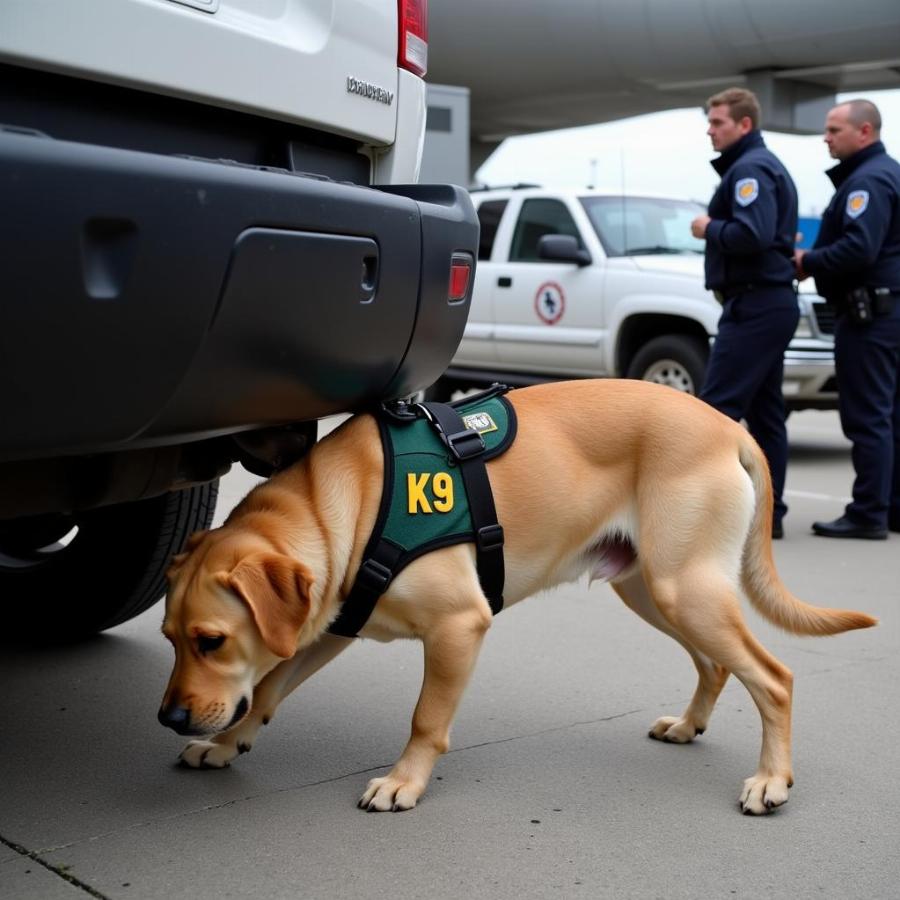The world of espionage is often shrouded in secrecy, with covert operations and undercover agents. But what if these agents had four legs, a wagging tail, and a wet nose? “The secret files of the spy dogs” may sound like a fantastical tale, but the reality of dogs playing vital roles in intelligence and security is more fact than fiction. From sniffing out explosives to delivering critical messages, these canine operatives have a history rich with intrigue and remarkable contributions. Let’s delve into the fascinating world of spy dogs and uncover their incredible capabilities.
From Ordinary Pups to Extraordinary Agents: How Spy Dogs are Trained
The journey from a playful pup to a highly skilled spy dog is a demanding process. It begins with careful selection, focusing on breeds known for intelligence, loyalty, and drive, such as German Shepherds, Belgian Malinois, and Labrador Retrievers. These chosen canines embark on an intensive training regimen, encompassing obedience, scent detection, and specialized skills like tracking, search and rescue, and even attack training for protection. The training is a delicate balance of positive reinforcement and firm guidance, nurturing the dog’s natural instincts while honing their abilities for specific missions.
A Nose for Danger: Spy Dogs in Explosive Detection
 A bomb-sniffing dog meticulously searching a vehicle for explosives.
A bomb-sniffing dog meticulously searching a vehicle for explosives.
Perhaps the most widely recognized role of spy dogs is in explosive detection. Their highly sensitive noses can detect minute traces of explosives, playing a crucial role in preventing terrorist attacks and ensuring public safety. These canine heroes are deployed in airports, train stations, and other high-risk areas, tirelessly working to protect lives by identifying hidden threats. Their ability to discern specific scents amidst a complex olfactory environment is truly remarkable.
Beyond the Bomb Sniffing: The Diverse Roles of Canine Operatives
Spy dogs are far more versatile than just bomb sniffers. Their skills extend to a wide array of critical operations, including:
- Intelligence Gathering: Some spy dogs are trained to silently plant surveillance devices or retrieve sensitive information from enemy territory.
- Messenger Dogs: In situations where electronic communication is compromised, dogs can reliably deliver messages across challenging terrains.
- Search and Rescue: Their keen sense of smell and unwavering determination make them invaluable in locating missing persons or survivors in disaster zones.
- Sentry Dogs: Their heightened senses and protective instincts make them excellent guards, alerting their handlers to potential intruders.
Are Spy Dogs Ethical? Addressing the Welfare Concerns
The use of spy dogs inevitably raises ethical questions. It’s crucial to ensure their welfare and avoid exploiting their loyalty and intelligence. Responsible training methods, proper veterinary care, and a focus on the dog’s physical and emotional well-being are paramount. Furthermore, providing a stimulating and enriching environment, even during missions, is essential for maintaining their mental health and preventing burnout.
Conclusion: The Unsung Heroes of Espionage
The secret files of the spy dogs reveal a world of extraordinary canine capabilities and unwavering dedication. From sniffing out explosives to delivering vital messages, these four-legged agents play crucial roles in intelligence and security operations. While ethical considerations regarding their welfare are important, their contributions are undeniable, making them true unsung heroes of the espionage world.
FAQ:
- What breeds are commonly used as spy dogs? German Shepherds, Belgian Malinois, and Labrador Retrievers are among the most popular breeds for spy work.
- How long does it take to train a spy dog? The training process can vary, but it typically takes several months to a year to fully train a spy dog.
- Are spy dogs always working? No, like any working dog, spy dogs require rest and downtime. They receive regular breaks and are cared for by dedicated handlers.
- What happens to spy dogs after they retire? Many retired spy dogs are adopted by their handlers or find loving homes with families who can provide them with a comfortable retirement.
- Are spy dogs dangerous? Spy dogs are highly trained professionals. While some are trained for protection, they are generally not aggressive unless commanded to be.
Looking for more information about remarkable canine abilities? Check out these articles:
- [Link to related article on Beaut Dogs about dog intelligence] (If available)
- [Link to related article on Beaut Dogs about working dog breeds] (If available)
Beaut Dogs: Your Ultimate Guide to the Canine World
Beaut Dogs is your one-stop resource for all things dog-related. We provide reliable, helpful, and in-depth information on various dog breeds, their characteristics, and care needs. From nutrition and training to health and grooming, Beaut Dogs is here to help you navigate the joys and responsibilities of dog ownership. When you need expert advice, don’t hesitate to contact us at Email: [email protected] for detailed and accurate answers from Beaut Dogs. Visit https://beautdogs.com today!